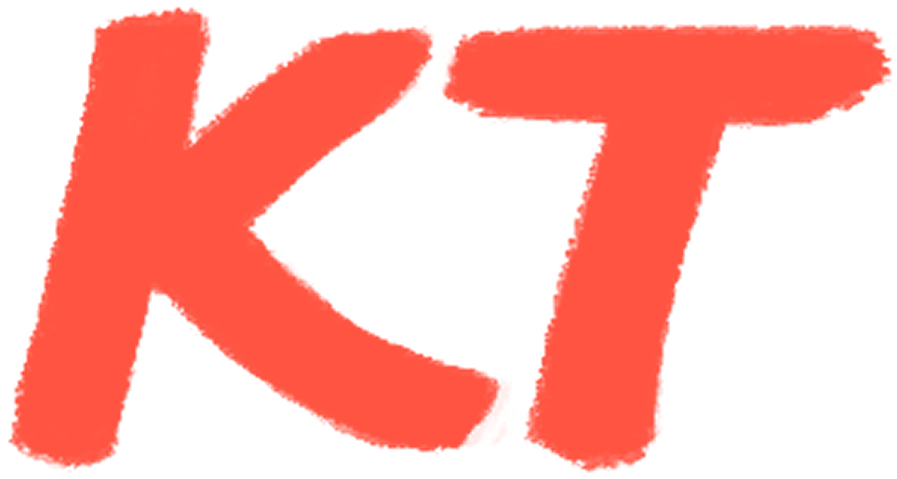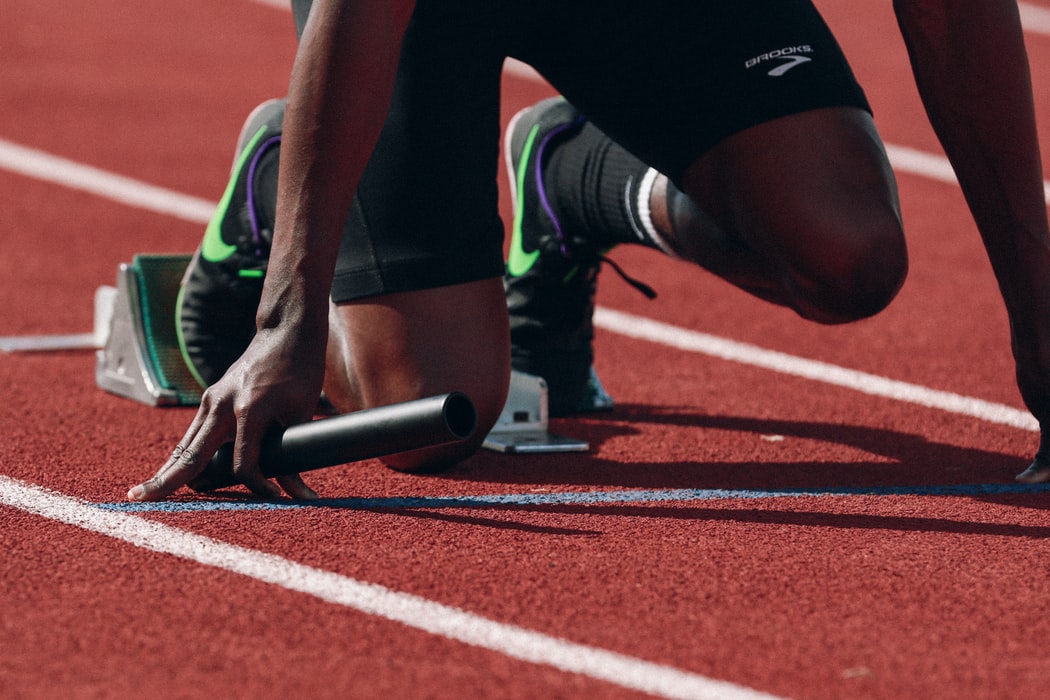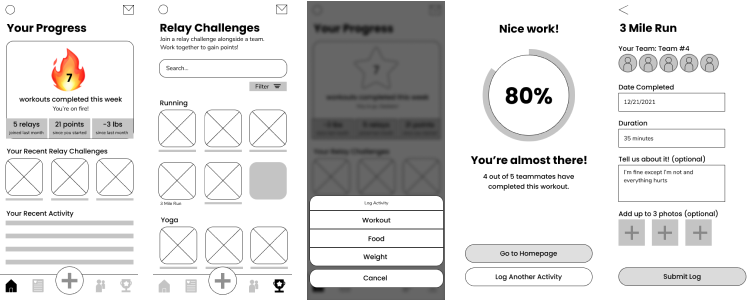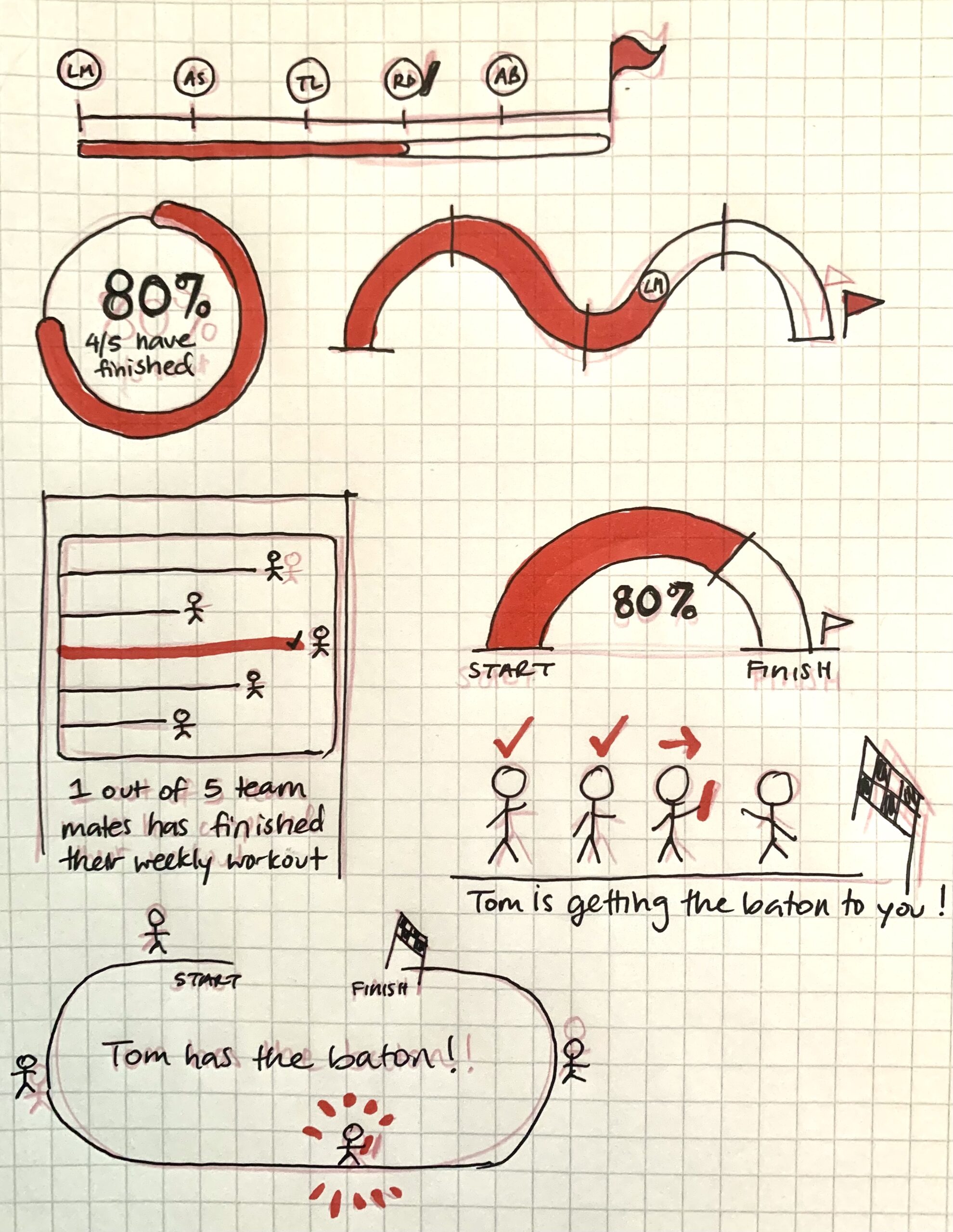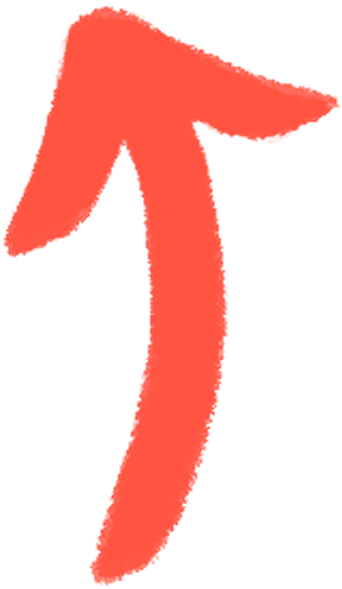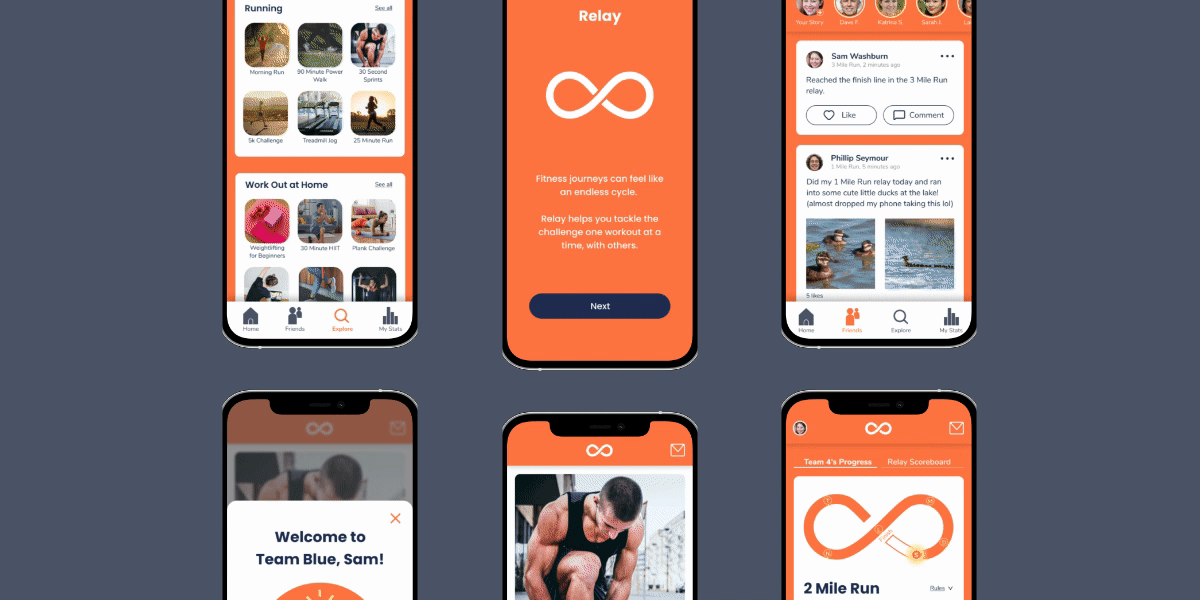
about the project
A majority of users only stick to using fitness programs and fitness goals in the short term.
Relay is a mobile application that employs a teamwork-focused relay race system to encourage users to stick to their fitness journey.
my role
Product Designer
project timeline
February 2021 - March 2021
project goal
Design a mobile application focused on meeting fitness goals
On average, 73% of adults in the United States who set fitness goals for themselves give up before meeting their goal. Around half give up on their goals within six weeks (source).
My goal for this project was to design a mobile application that would increase long-term fitness engagement for its users.
foundational research
Understanding the current problem space
I conducted research within the problem space to understand what motivated people to stick to their fitness regimen, as well as what increased likelihood of abandoning regimens.
I also conducted ten user interviews with participants who either:
- Had no issue with incorporating workouts into their schedule
- Tended to fall off of their workout routines
insights
How might we provide effective, extrinsic motivators for our users?

- Group exercise is far more effective than individual exercise
- Social support, performance comparison, and feeling instrumental to a common goal lead to regimen adherence
- Penalizations in whatever form increase likelihood of commitment
- All these factors transform fitness regimens from an option to an obligation

After synthesizing results, I understood that for my product to successfully increase fitness adherence I would need to utilize both group exercise and potential penalization to create motivation for my users.
competitive analysis
Other fitness apps focused only focused on motivating users intrinsically
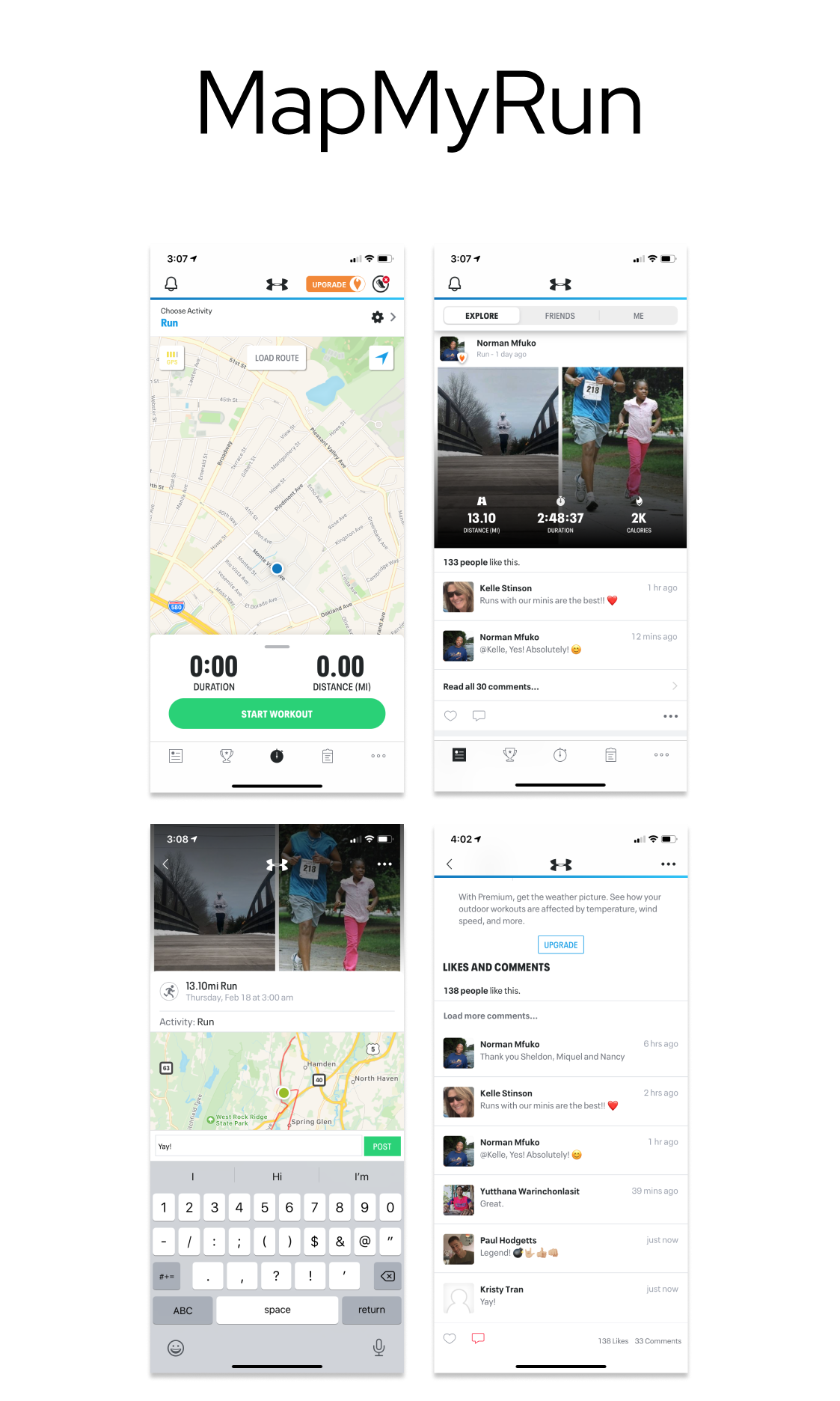
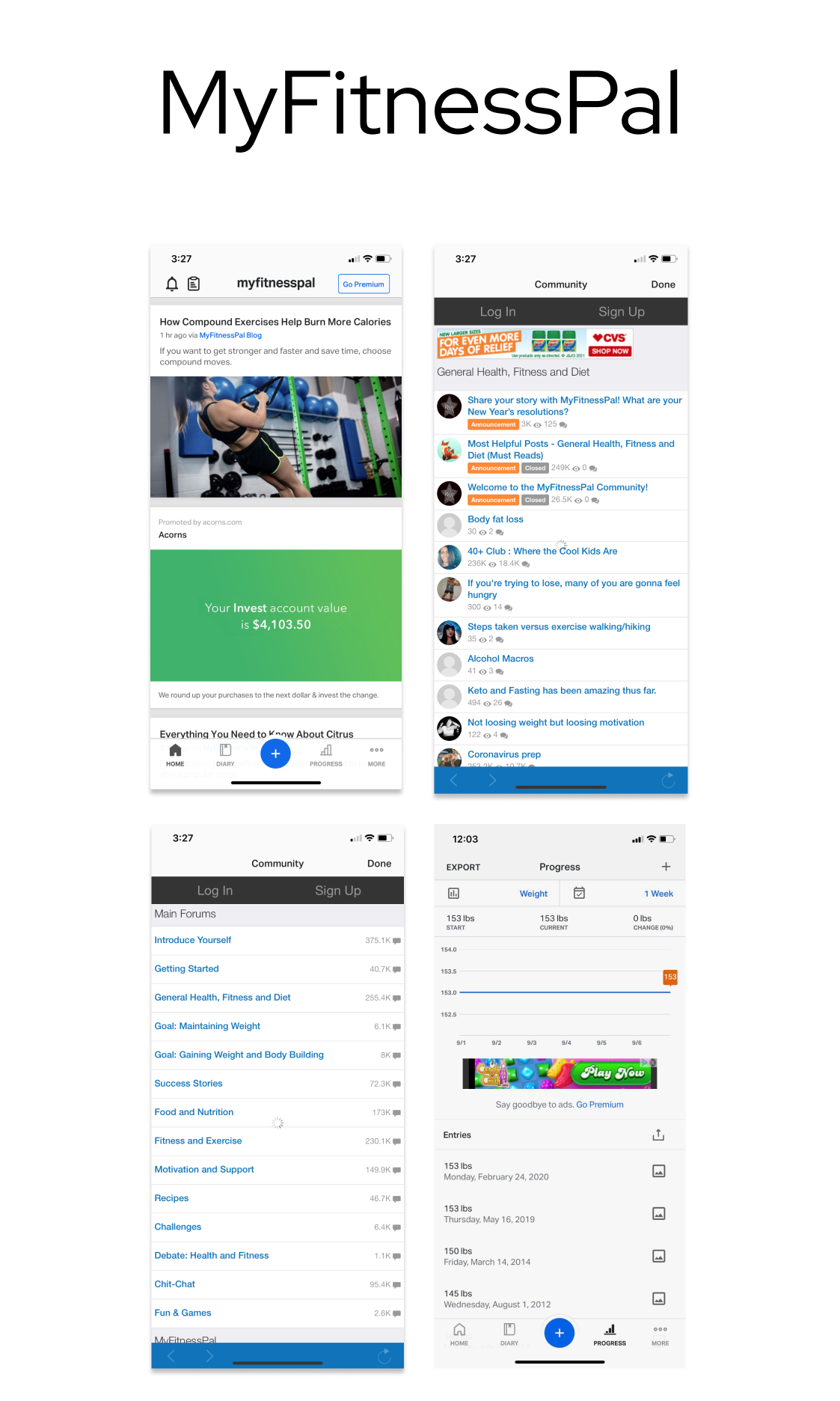
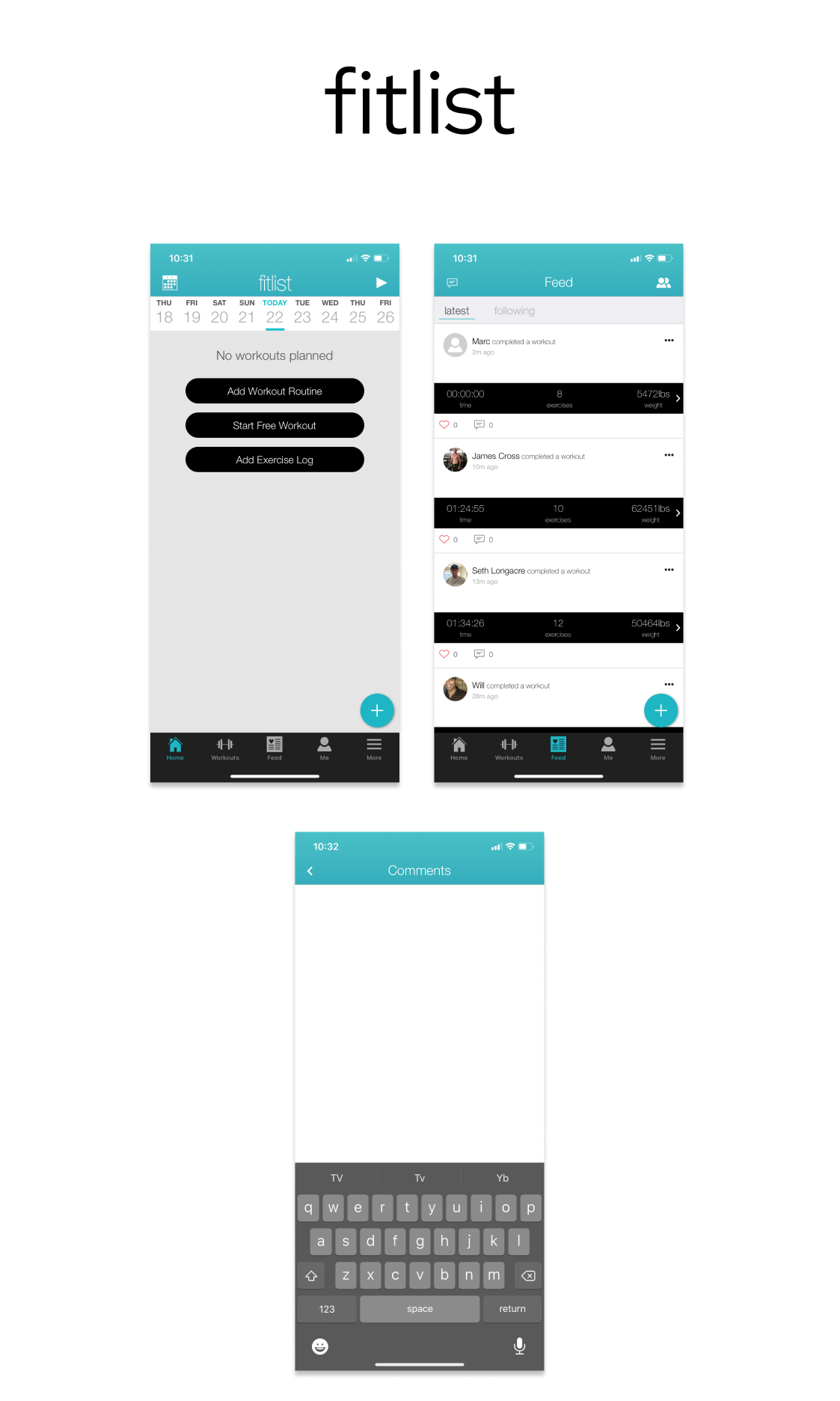
Conducting competitive analysis
To drive ideation, I reviewed popular fitness applications, focusing on value propositions as well as industry standards.
Community features were common
Many apps used a "community" social feature to provide users with a space for social support.
Apps only had intrinsic motivation
Even apps with group workouts were still rooted in intrinsic motivation. If a user didn't attend, it wouldn't affect the experience of the rest of the group. It still relied on an individual's personal drive.
I knew that my product would need to provide additional motivation that existing apps weren't utilizing enough.
initial designs
Ideating the relay race concept
In exploring different group fitness experiences, I felt a relay race concept best embraced the motivators I learned about in research:
- Group races meant social support from peers
- Performance comparison amongst other competitors and teammates
- Each member is vital to the success of the whole team
I designed a low-fidelity prototype to test what I called Relay: a fitness application that hosted in-app relay race competitions amongst teams. Teams would accrue points by successfully passing the "baton" along to each member, meaning whomever held the baton would need to complete their workout in order to pass it to the next person.
usability test findings
Relay still felt too similar to other fitness apps
I tested the low-fidelity prototype with five participants to validate feature concept and usability. While all five expressed interest in the concept of a relay race format, there were still two primary issues:
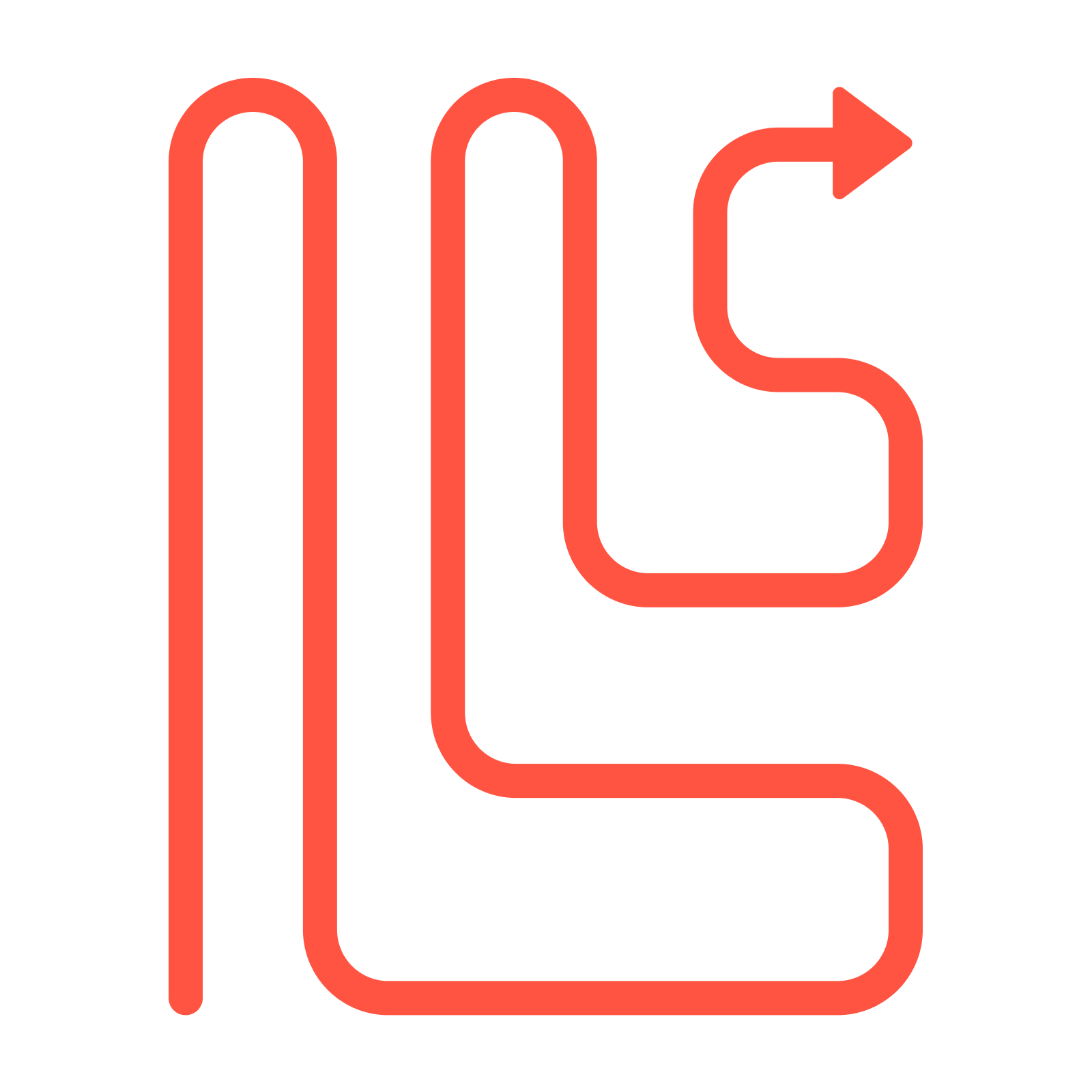
Cumbersome to use
3 out of 5 participants felt logging their workout activity had too many steps and wanted a quicker flow
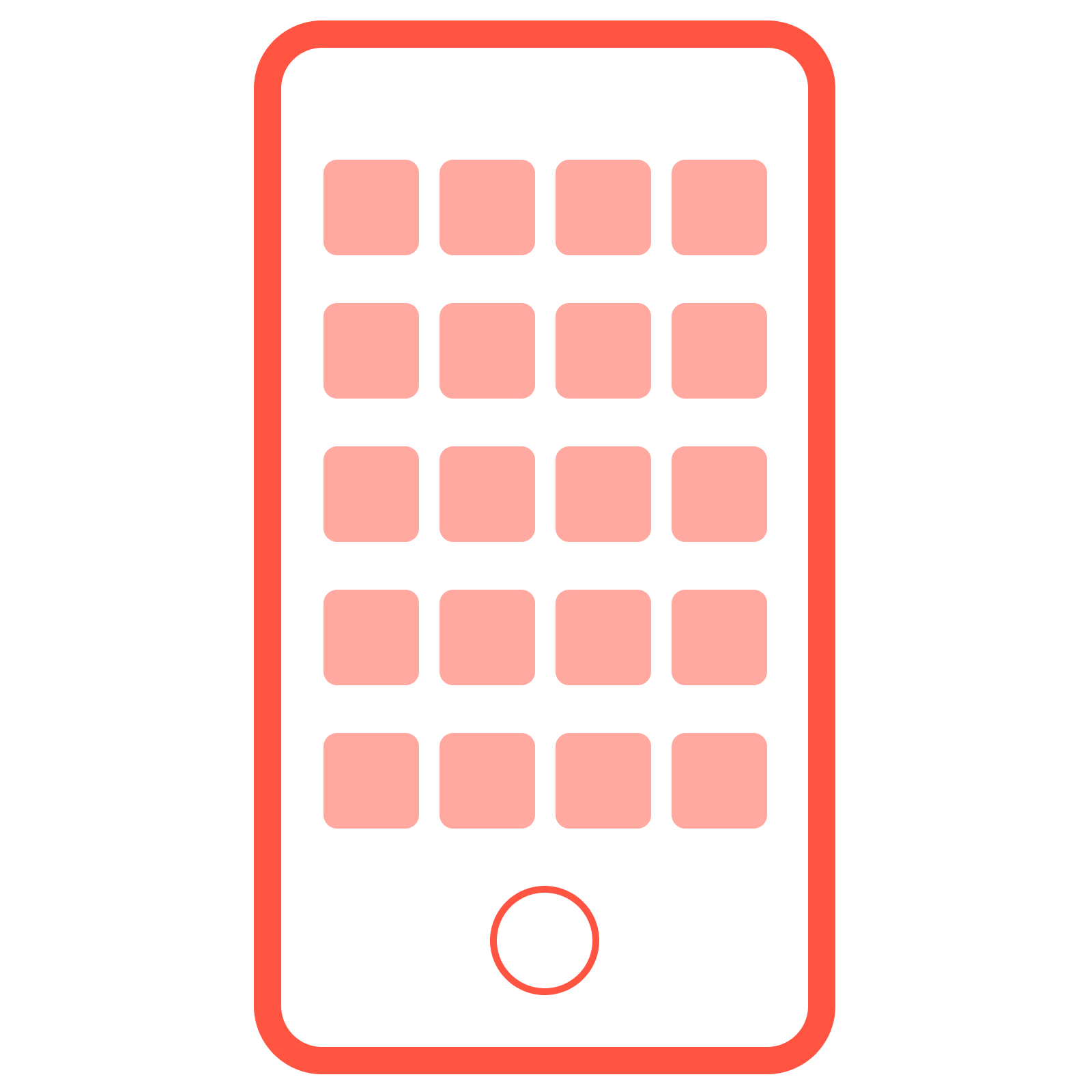
Too similar to competitors
All 5 participants expressed that the app felt very similar to their usual fitness apps and would feel no desire to convert
divergent concepting
Simplifying and gamifying the user experience
I diverged from my competitors and conceptualized ways for Relay to stand out.
- Pushed visual design further to align with Relay's gamification and race motif
- Removed options to log food and weight to place full focus on relay feature
- Added option to track a user's workout automatically via smartphone or smartwatch
After refining and redesigning, I moved forward with high fidelity mock ups.
ui and visual design
Developing a brand that embraces strength and vitality
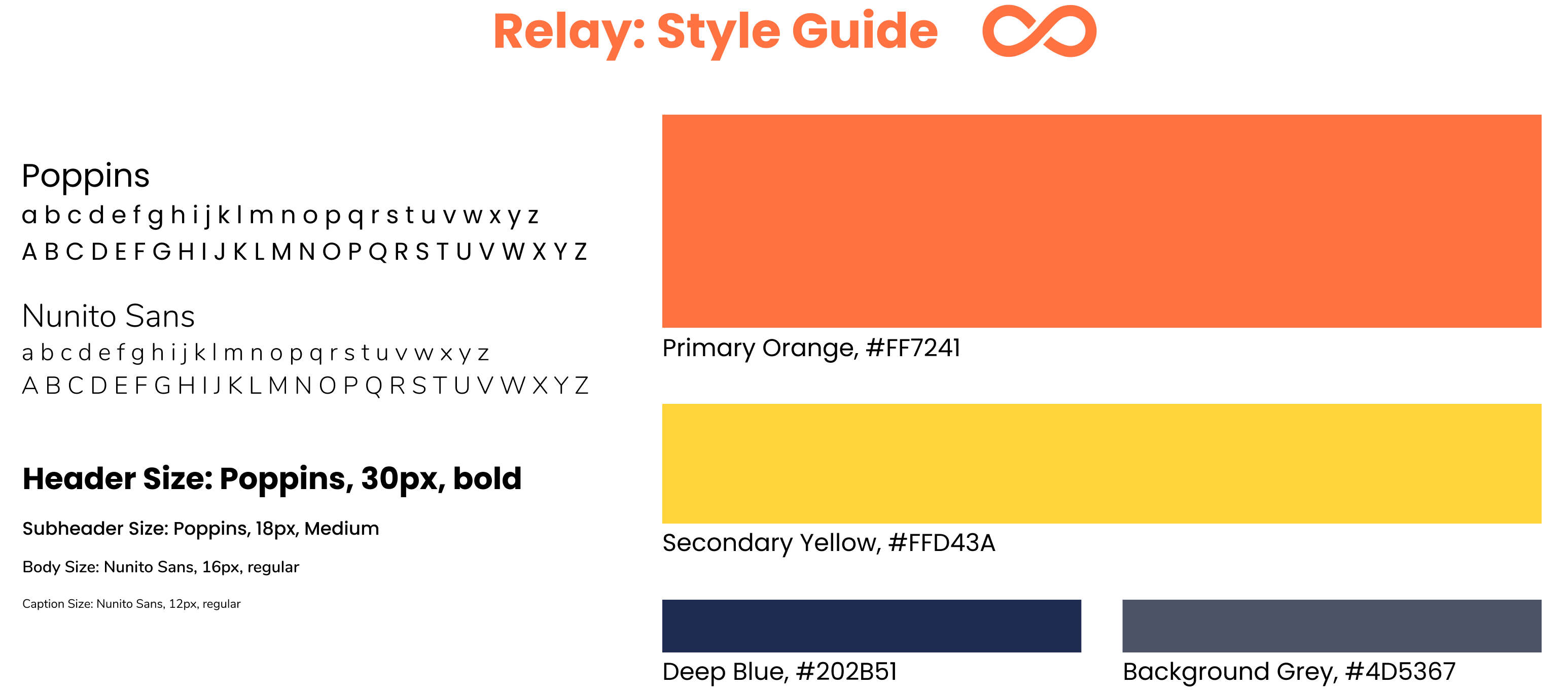
I wanted Relay's visual brand to feel energetic, vibrant, and active. I opted for bright oranges and yellows, with cool contrasting tones for primary actions and buttons. I selected fonts that were simple yet fun, to align with Relay's user experience.
final designs
Relay: Taking your fitness journey one workout at a time
Engage in team relay challenges
Join a timed relay challenge alongside other users in a team to compete for the most points.
A variety of challenges to choose from
Each relay challenge encompasses different types of workouts, so users can experience their fitness journey exactly the way they want.
Why?
Research and user interviews show that exercise in group settings is more effective and leads to a higher likelihood of regimen adherence. Providing options for type of workout will also tend to more user needs, increasing likelihood of conversion and retention.
Complete your workout to pass the baton
Each user has their turn to pass the baton to their next team member. Users must log their challenge workout in order to continue the team relay.
Gain a point after a full relay lap
Once the last member in the team logs their workout, everyone gains a point and the next relay lap starts. The faster the team finishes, the more points they accrue!
Why?
Along with group-focused exercise, users are far more likely to commit to their fitness regimens if they are faced with extrinsic motivators such as competition and the potential of penalization (in this case, holding the team from gaining points).
Keep up with what other users are doing
Users can share stories and posts about their challenge workouts via Relay's social feed.
Connect with other players
Like, comment, and direct message users to stay connected and support everyone's fitness journeys.
Why?
Social support during fitness journeys promotes encouragement and sportmanship, and ultimately embraces the notion that all Relay users are working toward a common goal. This will boost user experience and satisfaction.
final thoughts and takeaways
Ideas for future Relay iterations
If I were to continue working on Relay, I would want to continue iterating on the following aspects:
- Competition: I think there is potential to further push the extrinsic motivation of users by providing relay challenge winners with a team prize
- Social feed: I eventually want to expand the activity feed to include more options for details on a user's accomplishments in their fitness journey
- Gamification: While I believe Relay has a highly distinctive value proposition, I think there is room to take the concept further and drive the "game" to be more in-app by hosting workouts, or by providing users with workout games.
Design is more than just the sum of its parts
Creating Relay made me understand how malleable and fluid the design process really is. While all steps in the process are important, they do not carry equal weight at all times— some steps demand more time and dedication over another depending on the project. This project taught me to consistently embrace divergent thinking when it comes to ideation in order to create the best possible product.
